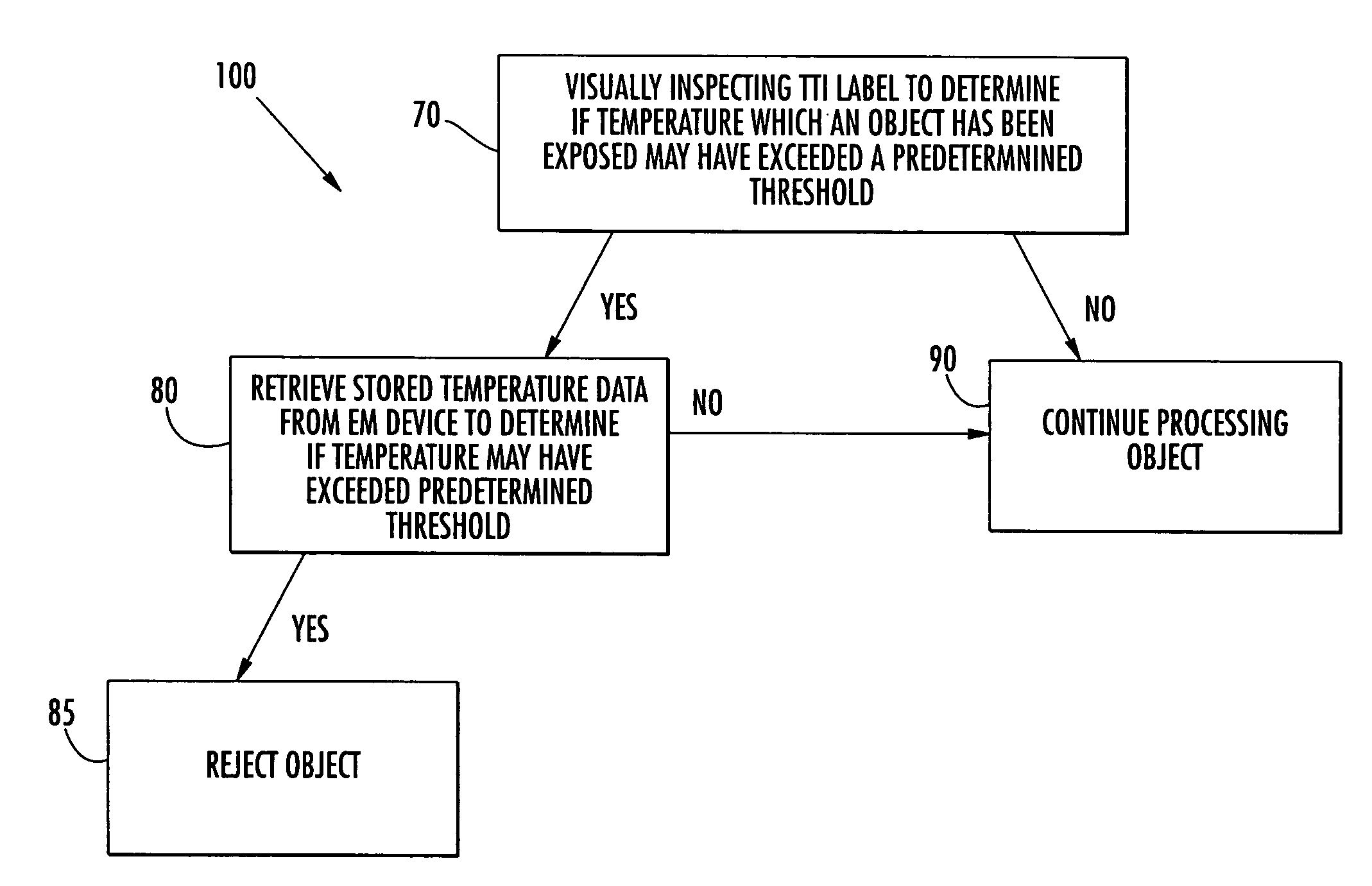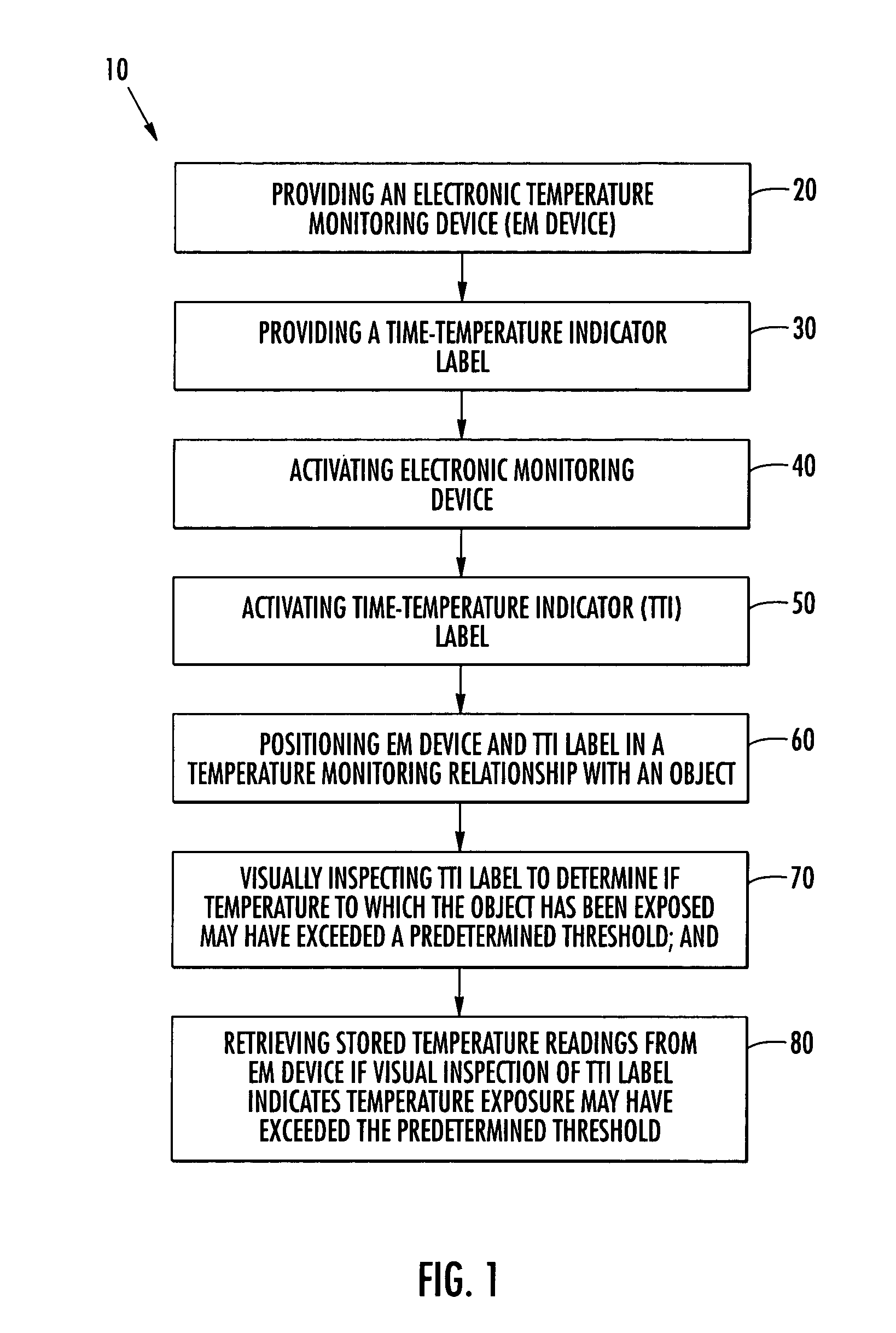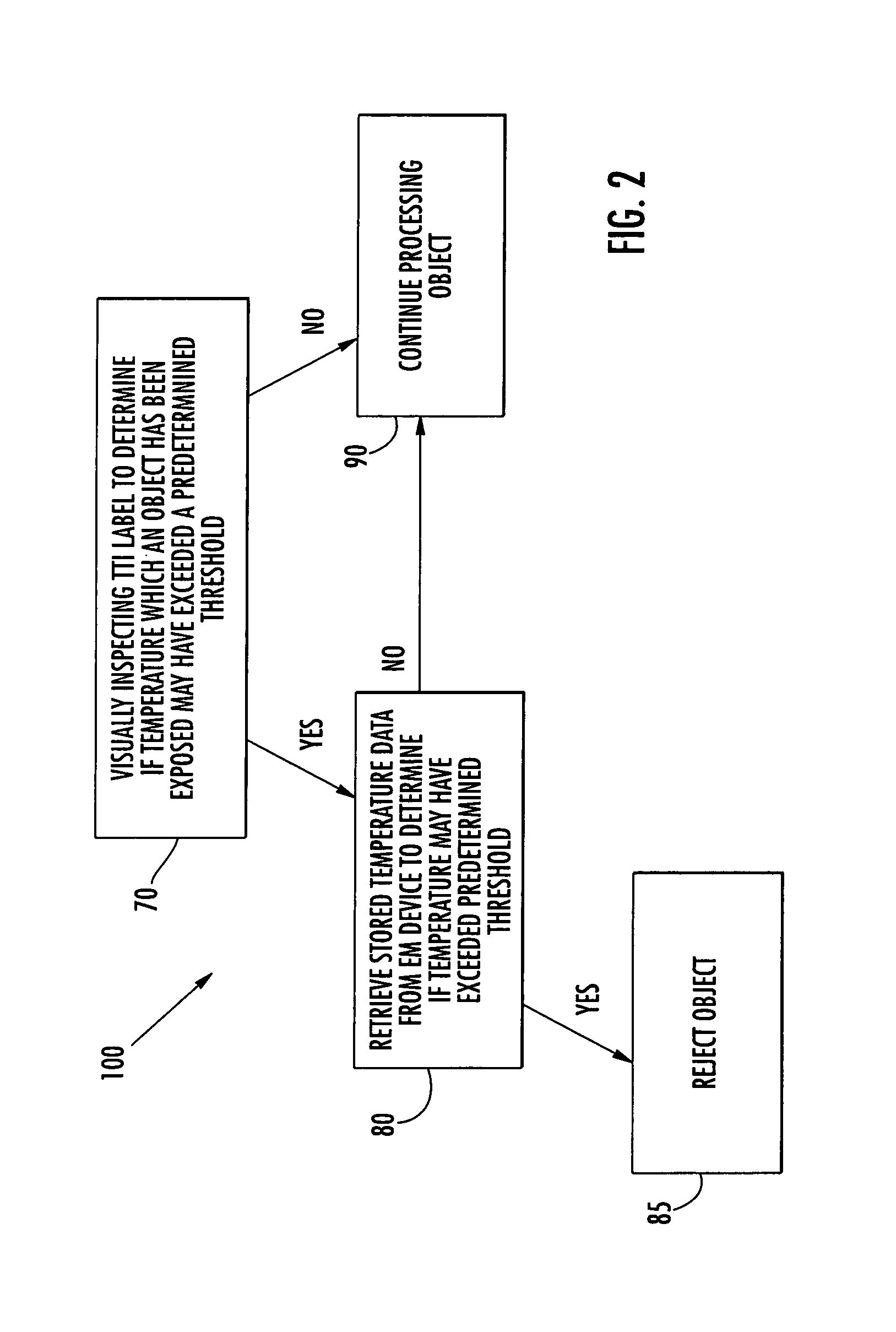Method of monitoring temperature exposure
a technology of temperature exposure and monitoring method, applied in the direction of instruments, heat measurement, data acquisition and logging, etc., can solve the problems of affecting the quality and safety of pharmaceuticals, food products, chemicals, biological products, and may give false readings of indicators, and achieve the effect of quick and efficient monitoring
- Summary
- Abstract
- Description
- Claims
- Application Information
AI Technical Summary
Benefits of technology
Problems solved by technology
Method used
Image
Examples
Embodiment Construction
[0022]The present invention now will be described more fully hereinafter with reference to the accompanying drawings, in which some, but not all embodiments of the invention are shown. Indeed, the invention may be embodied in many different forms and should not be construed as limited to the embodiments set forth herein; rather, these embodiments are provided so that this disclosure will satisfy applicable legal requirements. Like numbers refer to like elements throughout.
[0023]The invention is a method of monitoring the temperature to which an object has been exposed comprising combining a Time-Temperature Indicator (TTI) with an electronic monitoring device (EM device). The TTI device provides a rapid initial determination as to whether the temperature may have exceeded a predetermined threshold. The electronic monitoring device functions to reduce or prevent the rejection of goods based on inaccurate TTI readings.
[0024]Time-Temperature Indicators that may be used in the invention...
PUM
| Property | Measurement | Unit |
|---|---|---|
| temperatures | aaaaa | aaaaa |
| temperature | aaaaa | aaaaa |
| time-temperature | aaaaa | aaaaa |
Abstract
Description
Claims
Application Information
 Login to View More
Login to View More - R&D
- Intellectual Property
- Life Sciences
- Materials
- Tech Scout
- Unparalleled Data Quality
- Higher Quality Content
- 60% Fewer Hallucinations
Browse by: Latest US Patents, China's latest patents, Technical Efficacy Thesaurus, Application Domain, Technology Topic, Popular Technical Reports.
© 2025 PatSnap. All rights reserved.Legal|Privacy policy|Modern Slavery Act Transparency Statement|Sitemap|About US| Contact US: help@patsnap.com



